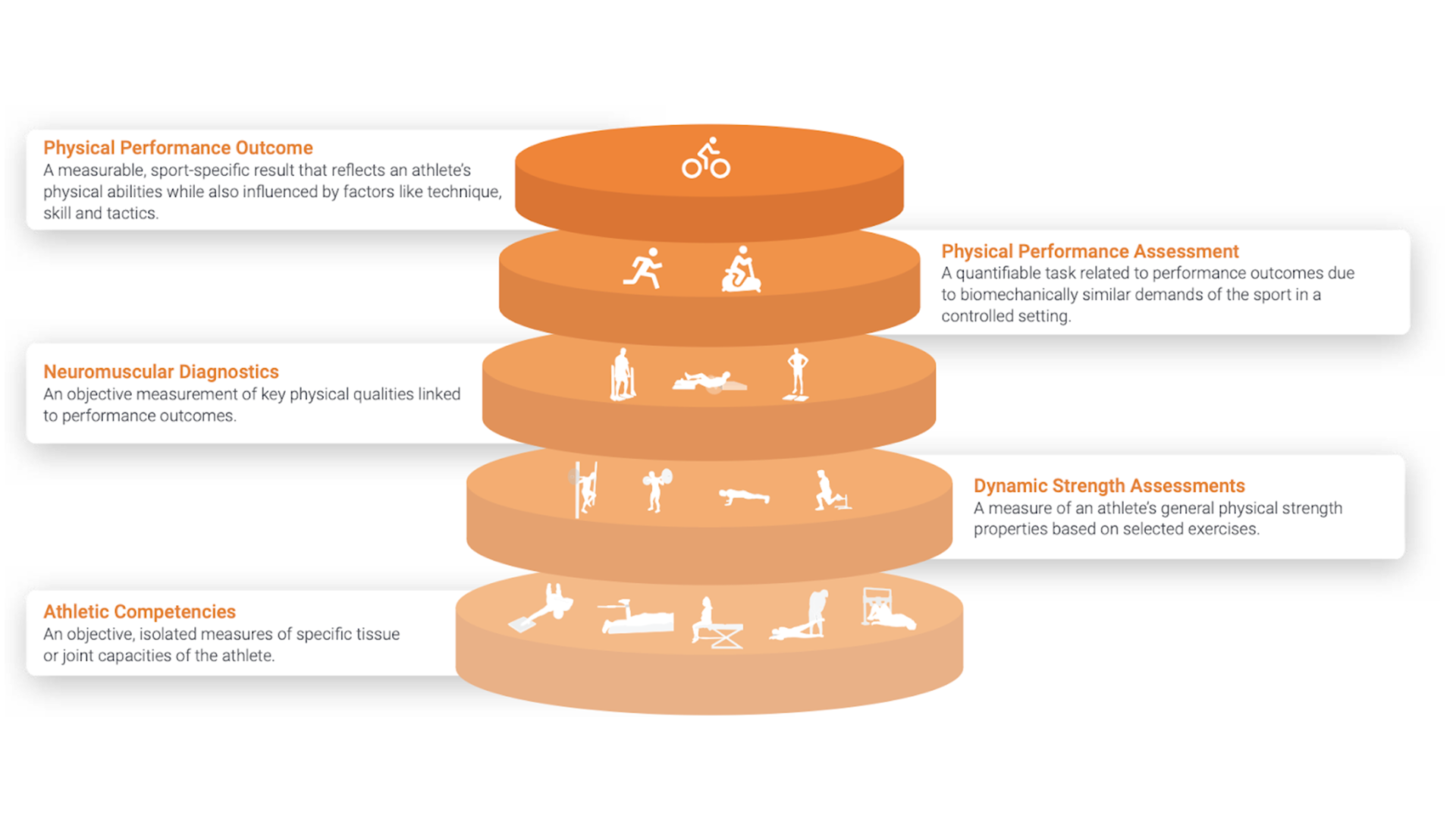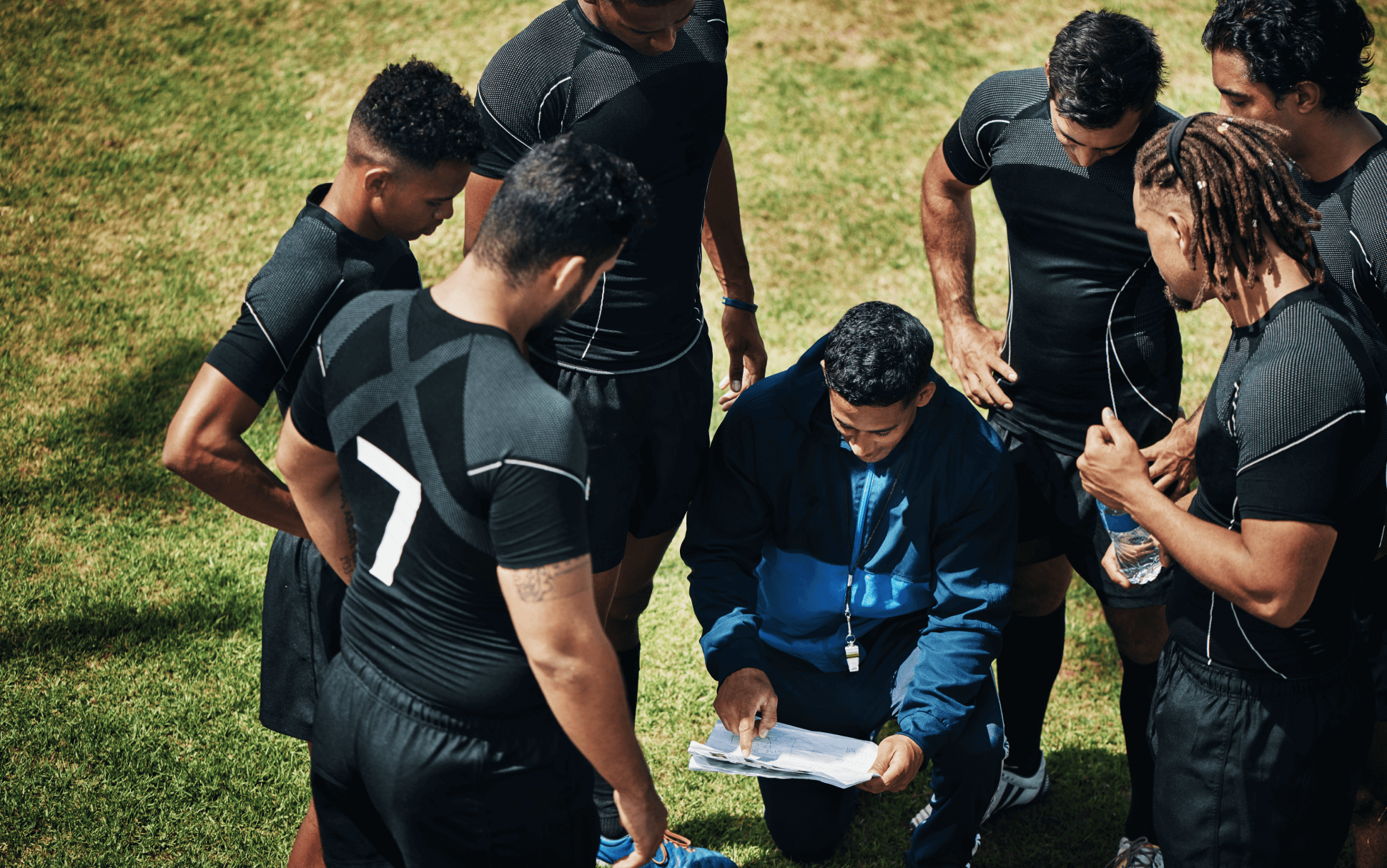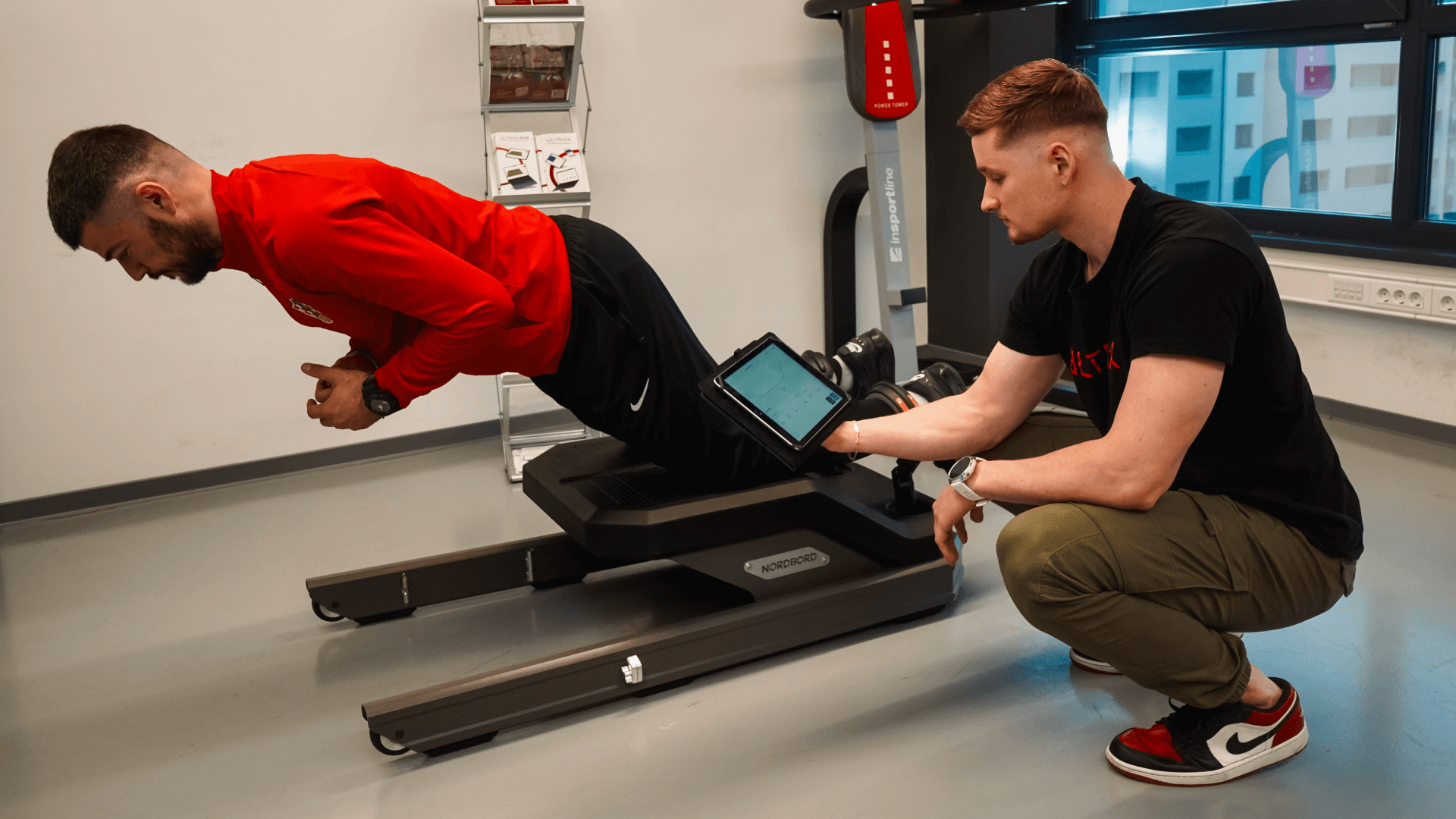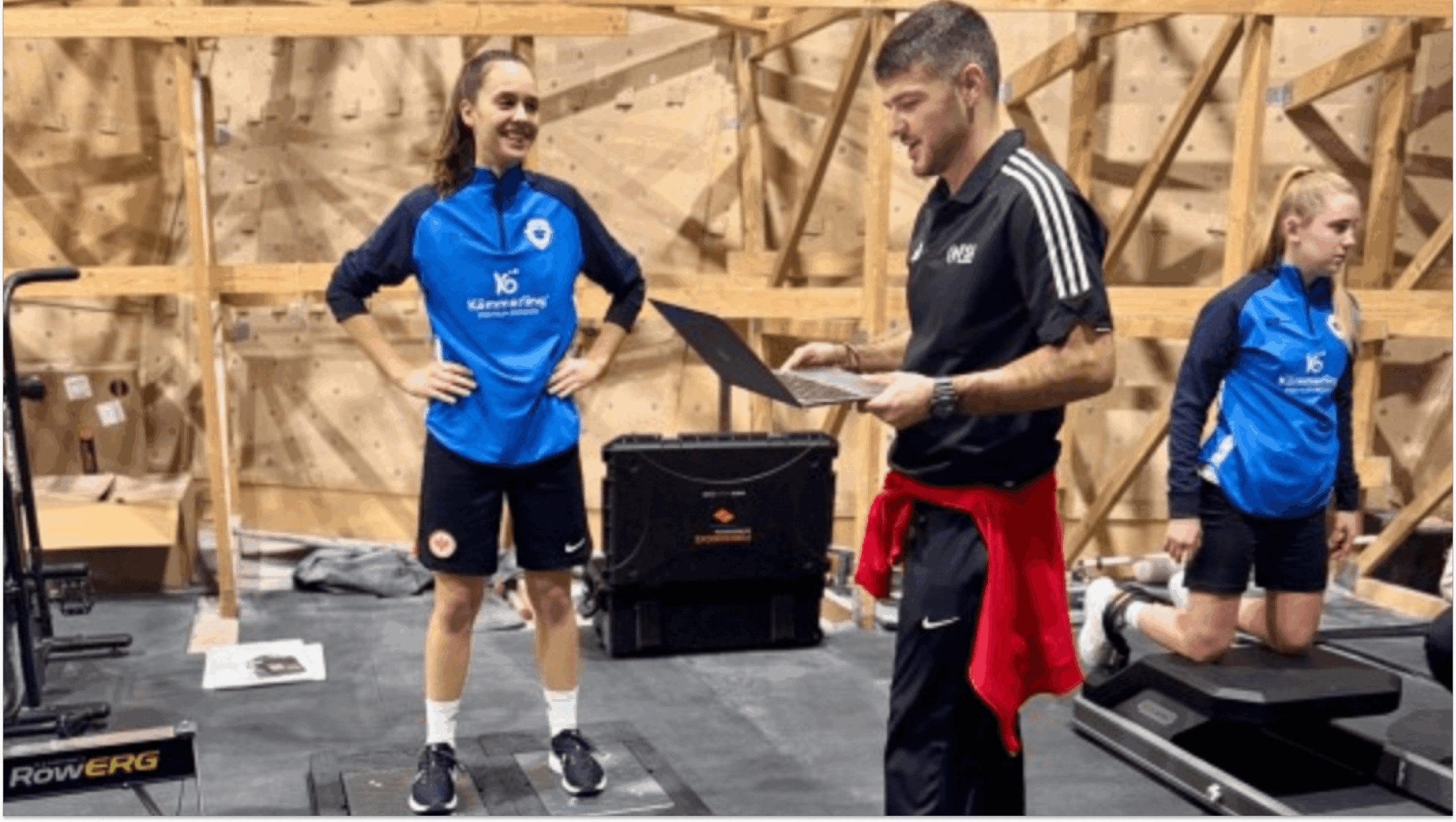Mentorship Programs
A few weeks ago, we kicked off our mentorship program for coaches who want to work, or are already working, in football. This program dives into all the key aspects of strength and conditioning in football while addressing the responsibilities and challenges of this role. We’ve been covering topics like assessment, monitoring, periodization, and programming principles, along with how to plan and develop key physical qualities like speed, strength, endurance, and power.
Towards the end of the program, we’ll dive into return-to-sport protocols, ensuring that coaches know how to manage that crucial phase of getting players back on the pitch. One thing I love about this program is how we mix practical sessions, theoretical insights, and group work. It’s not just about learning concepts; it’s about sharing ideas, collaborating, and preparing for what real-life teamwork feels like in a football environment.
Where do VALD Equipment Fits Here and in Football
This blog series is inspired by those conversations and lessons.
In this first part, I’ll show you how VALD systems can help us get ahead, keeping players ready and bridging the gaps during this important period. Let’s get into it!
The entire process of strength and conditioning in football (simplification of the complex system by reductionist approach, more pragmatical) can be broken down into three main stages:
- Assessment – Detecting the Players’ Battery: This is the starting point. By performing assessments with tools like force plates and the NordBord, we get a snapshot of a player’s current capacity—be it their strength levels, imbalances, power outputs, or recovery status. This is where we figure out what each player needs and where potential risks might lie.
- Training and Planification: Once we know where players stand, we move into action. This is where we carefully plan and dose training sessions, focusing on developing the specific qualities each player needs. The goal is to ensure progress while managing workload to avoid overtraining or injuries.
- Monitoring – Checking the Players’ Responses: As training progresses, monitoring becomes crucial. Using the same tools, we track how players are responding to the work we’ve prescribed. Are they improving? Are they fatigued? Are they at risk of injury? This constant feedback loop is vital for adjusting training loads and keeping players on track.
And, of course, at the far end of the spectrum is the ultimate test: the football game. Everything we do in assessment, training, and monitoring leads up to this moment. The challenge is ensuring players are at their peak when it matters most.
The VALD team has recently published a manual on how to use force plates and what data to focus on. Even for seasoned professionals, the wealth of data available can sometimes feel overwhelming (I highly recommend anyone working with force plates to check out the manual). It’s easy to get lost in the forest of data and miss the individual trees, but the key is to aim for pragmatism—how can this data directly inform and improve your training practices?
When using force plates or the NordBord, we can leverage them for three main purposes: defining player profiles, monitoring, and training. These tools aren’t just about collecting numbers; they help us understand players’ strengths, weaknesses, and readiness to perform.
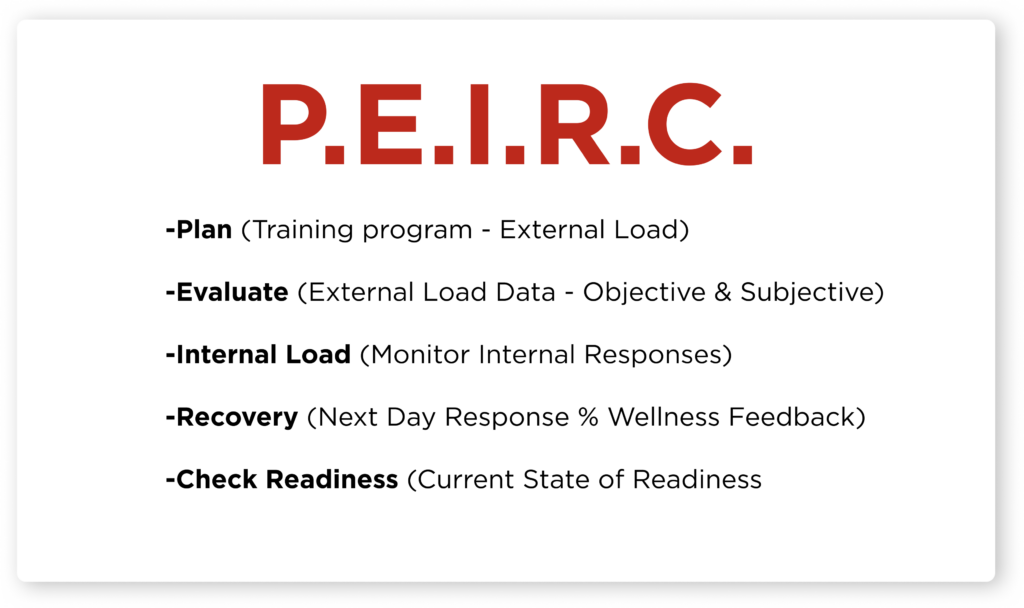
The P.E.I.R.C. Monitoring cycle
This concept aligns perfectly with our P.E.I.R.C. monitoring cycle, where VALD technology plays a role in defining players’ “batteries” (capacity), designing interventions, and tracking their readiness. Specifically, the data fits into the profiling, interventions, and readiness monitoring aspects of the model.
The acronym P.E.I.R.C. for the Training Load Cycle aligns well with both the practical approach used in sports science and the philosophical ideas of Charles Peirce, the founder of pragmatism. Just as Peirce emphasized the practical consequences of beliefs and actions in determining their truth, this training cycle follows a logical, pragmatic approach to athlete performance by focusing on real-world outcomes.
For those interested in learning more about our P.E.I.R.C. system and how it integrates these tools, check out our latest blog post: Monitoring Elite Young Soccer Players.
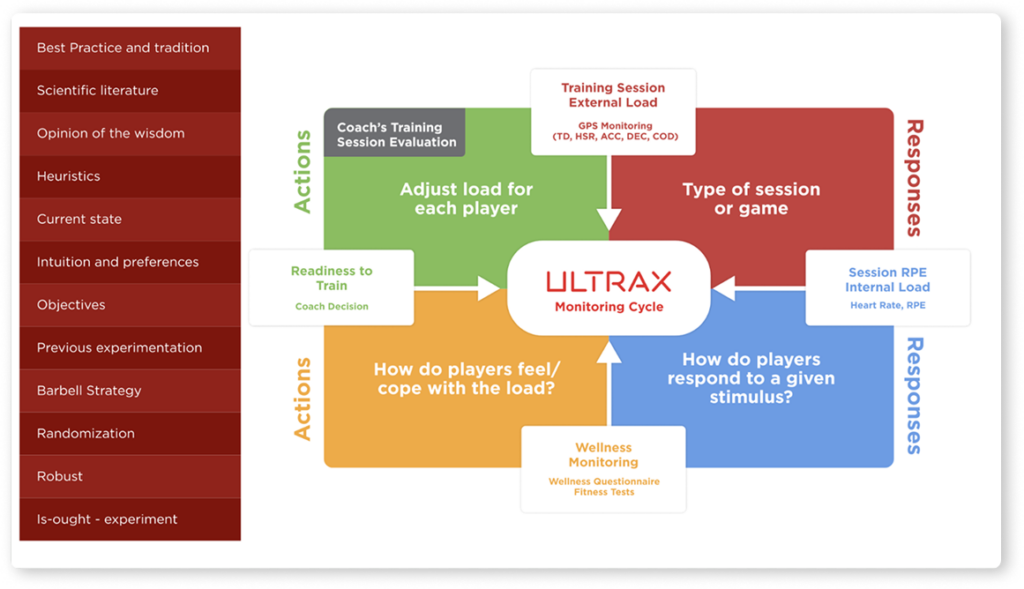
Planning the Offseason: Programs for Every Player
Before I start planning the offseason for my players, there are several things I like to consider. A key part of my preparation is analyzing the last month of data to see how my players have performed and how their workloads compare. In previous blogs, I have discussed the different groups within a football team: starters, goalkeepers, substitutes, reserves, and even the rehab group. Each of these groups requires a unique approach when it comes to designing their offseason programs.
For example, what happens if we give players who have had fewer minutes played—such as substitutes or those in rehab—too much off time during the offseason? Research has shown that substitute players tend to experience lower weekly training loads compared to starters, which can lead to a decline in their performance levels over time. One study, for instance, highlights how substitutes often accumulate fewer high-intensity efforts and overall training volumes, creating a gap in readiness and fitness compared to starters. This gap underscores the need for individualised programming during the offseason to bridge these deficits.
Players who already lack intensity and volume during the season need specific interventions in the offseason. Often, I’ve found that players with fewer minutes played are eager to have fewer rest days, as they understand the importance of catching up on their physical readiness.
In terms of data, I start by reviewing both the chronic and acute loads collected via GPS monitoring. Key metrics I look at include:
- Total Distance: The overall volume of running during matches and training.
- Decelerations and Accelerations: Indicators of explosive movements and neuromuscular demand.
- High-Speed Running (HSR): Efforts above a defined speed threshold, which provide insight into players’ ability to maintain intensity.
- Sprint Distance: Distances covered at sprinting speed, critical for tracking explosive output.
- Relative Data: Metrics adjusted for the minutes played, offering a better comparison across players with different game times or drill formats.
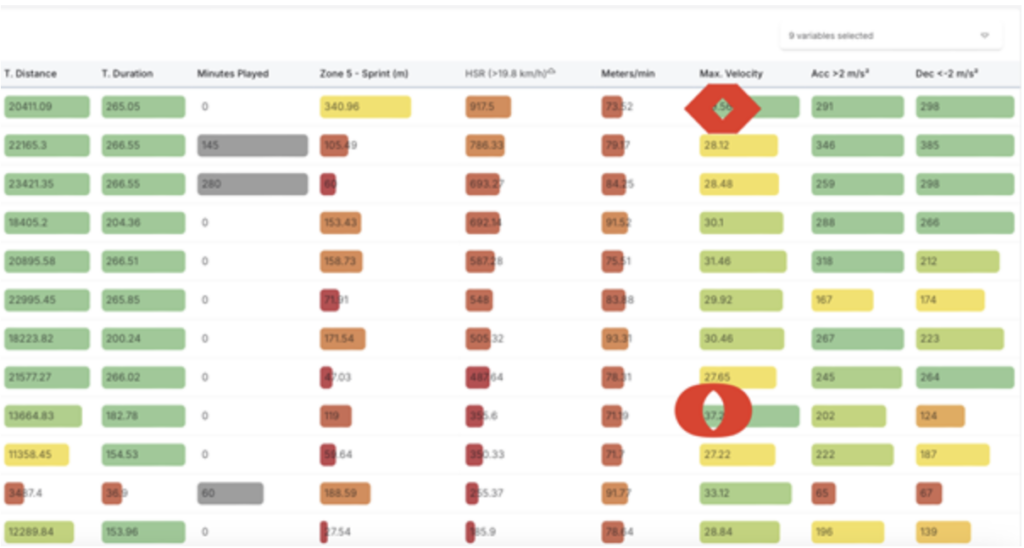
I also combine these objective metrics with subjective load data, such as players’ perceived exertion and recovery scores, to develop a holistic picture of their workload and readiness. By comparing team averages and individual trends, I aim to detect patterns in weekly loads and use these as a baseline for offseason planning.
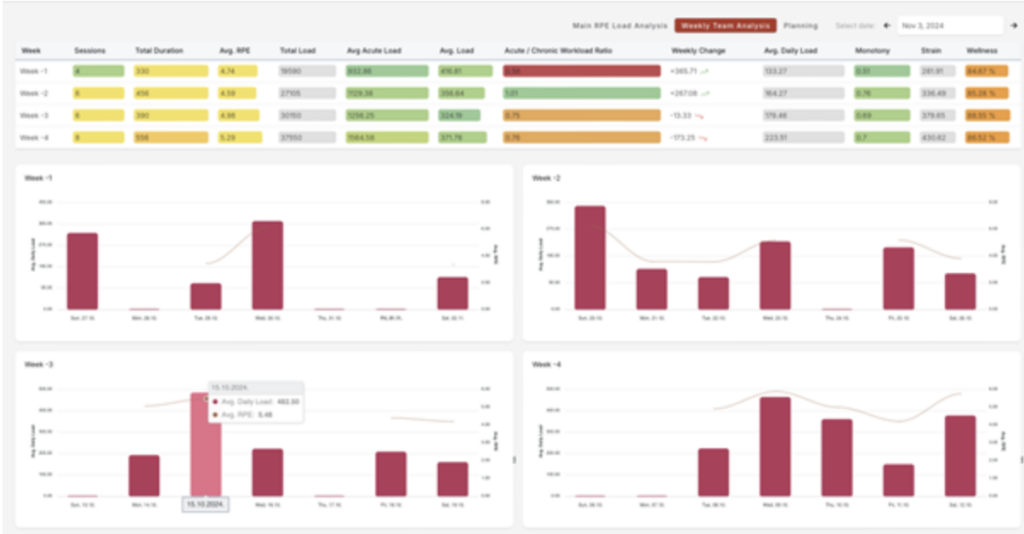
For players who missed significant match time, I emphasize maintaining or even slightly increasing their chronic loads during the offseason to ensure they can handle the demands of preseason. Meanwhile, for players with higher loads during the season, I balance recovery with maintaining fitness.
We can clearly observe in the example above how subjective values and weekly AU loads are significantly lower than the typical weekly subjective loads of starters. This discrepancy highlights the challenges faced by players with fewer minutes or different roles within the team.
When I analyze these data points, I often notice that the typical weekly in-season average for a senior player ranges from 2,500 to 3,500 AU units per week, depending on the player’s role and physical demands. For some highly involved players, this value can even exceed those levels. With careful planning and progression, I have seen cases where in-season loads can reach 4,000 to 4,500 units, particularly for players with robust recovery strategies and consistent physical demands.
This data reinforces the importance of ensuring that players with reduced minutes, such as substitutes or those in rehab, are managed effectively during the season and into the offseason. Matching their loads closer to those of starters, when appropriate, is critical to preventing performance deficits and keeping them prepared for when they’re needed on the pitch.
What is becoming increasingly evident is that players today need to arrive at preseason already prepared. The preseason schedule is packed with games, and it’s not uncommon to encounter scenarios where teams have double games by week two or three of preseason. This leaves little room for intense training sessions, as the focus shifts towards optimizing both performance and recovery.
In this context, it’s essential to train smart and hard, but more importantly, to understand how much and when to apply specific loads. Additionally, tracking how your players and teams are responding to this load is key to managing their performance and avoiding injury risks.
This is precisely why we integrate force plate and Nordboard testing into our workflow with teams. These tools provide critical data points that allow us to:
- Establish a profile or “battery” of each player, which serves as a baseline for understanding their capabilities and limitations.
- Use these data points to inform training interventions, ensuring that each session is targeted and efficient.
- Develop monitoring strategies to keep track of how players are adapting to their workloads.
- Continuously assess how this “battery” or profile evolves over time, enabling us to refine both individual and team approaches.
I like to emphasize that the first time testing procedure is always about defining the player’s profile. It provides a baseline, a snapshot of where the player currently stands. Every subsequent measurement builds on this baseline, helping us understand how players respond to different training loads, games, and interventions.
When we use force plates, they allow us to go beyond surface-level observations and help us detect a player’s basic functional baseline. This includes aspects like:
- Injury history
- Functional Movement Screen (FMS) results
- Pain provocative tests
- Training history and training age
From there, the data we collect can be used to assess several critical areas:
Dynamic Strength Index (DSI): Evaluating the relationship between the player’s maximal strength (forces) and explosive strength. This index is a key indicator of their ability to apply force rapidly, an essential factor in football. I particularly value Alex Natera’s layers of hierarchy of testing, which provide a structured approach to this process.
Neuromuscular Assessment: This covers metrics like power output and reactive strength, both of which are essential for explosive and elastic actions like jumping, sprinting, or sudden changes in direction.
Physical Performance Assessment: speed and endurance.
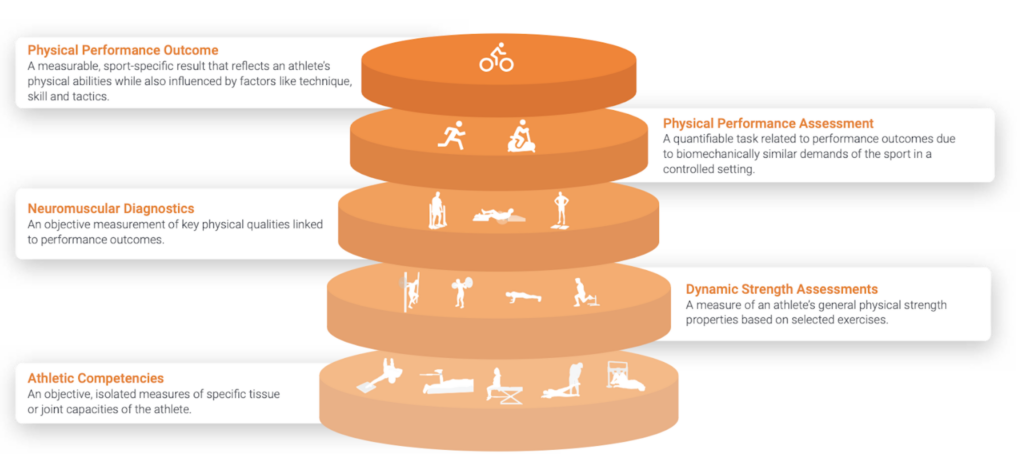
The testing procedure starts during the last week of the season, giving us a snapshot of where the players currently stand. This timing allows us to gather valuable information that feeds directly into programming for the offseason. It’s crucial because the offseason sets the foundation for the players’ readiness heading into preseason and beyond.
How We Organize Testing Procedures in a Team Setting
When working with a team, the logistics of testing can be challenging. That’s why I emphasize two key approaches:
Efficiency in Group Settings: For tools like force plates and the Nordboard, we organize players into small groups to streamline the process. Tests are scheduled around team training sessions or recovery days to minimize disruptions. A testing circuit is often used, where players move between stations: e.g., Nordboard for hamstring testing, force plates for countermovement or drop jumps, and possibly sprint or strength metrics depending on the facility.
Embedded Testing or Hidden Testing: I’m a strong believer in using embedded testing. This means integrating testing into the training environment to gather meaningful data without dedicating separate sessions to formal testing. Many training variables and exercises can serve dual purposes for both development and testing. For example:Force plates during warm-ups or explosive strength blocks for countermovement jump (CMJ), drop jump, and reactive strength. assessment. Nordboard hamstring tests can be done as part of activation or post-training recovery sessions. Sprint drills or small-sided games can provide data on speed, acceleration, and deceleration if GPS is used
Readiness Checks: Hidden testing is particularly useful for readiness assessments, giving us real-time feedback on players without adding mental or physical fatigue from standalone testing sessions.
Testing/Activation Circuit
TRX Row – 12 reps + Plank Holds – 30 sec + Push-Ups with Rotation – 6/6 reps (each side) + Countermovement Jump on Force Plates – 3 reps (Early in the week: Emphasize maximum jump height., Later in the week: Focus on minimizing contact time for faster reactive jumps) + Stir the Pot – 6/6 reps (each direction) + Split Squat Holds – 10 sec per leg Nordic Hamstring Curls – 5 reps
Wrapping Up
This first part highlighted how VALD technology, such as force plates and the Nordboard, helps us assess, plan, and monitor players effectively during the offseason. By combining early testing, embedded assessments, and personalized training plans, we ensure players are ready for the demands of preseason and beyond.
In Part 2, we’ll focus on specific variables these tools measure—such as dynamic strength index, power, and reactive strength—and how to use this data to create impactful training interventions and optimize player readiness. Stay tuned!

